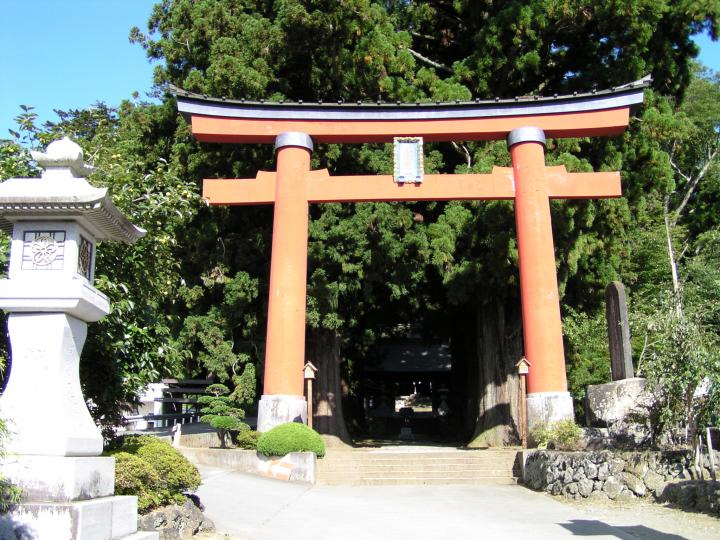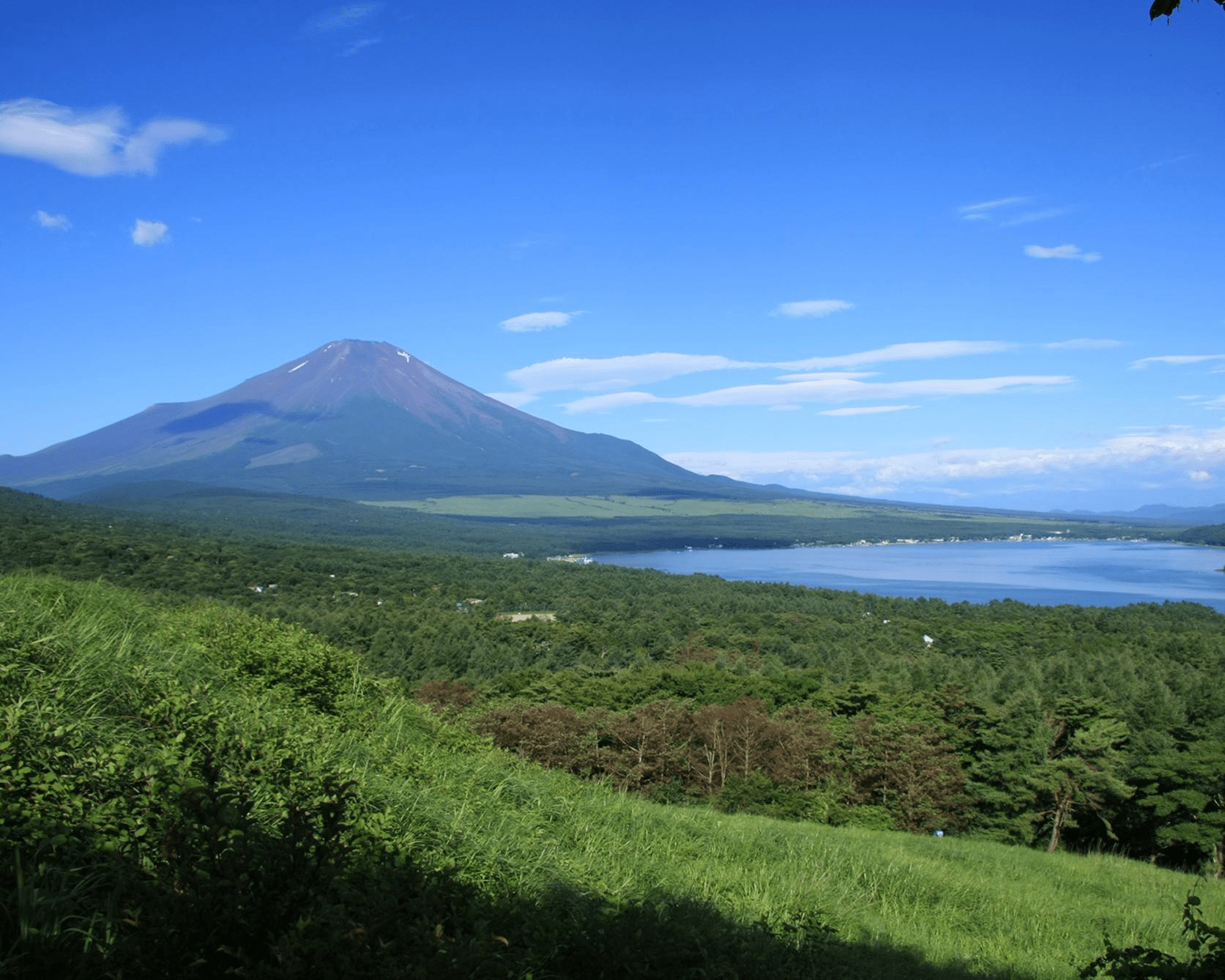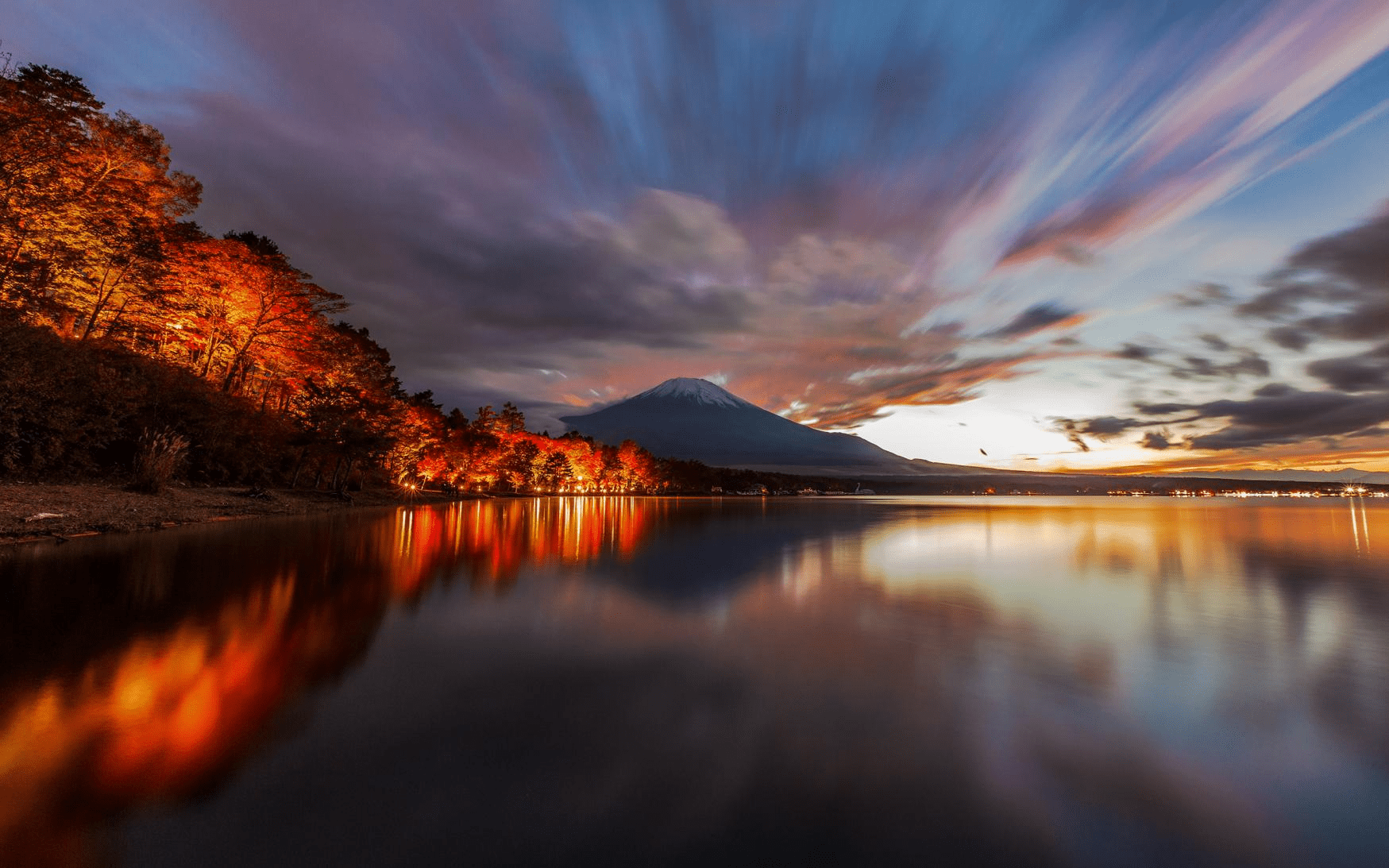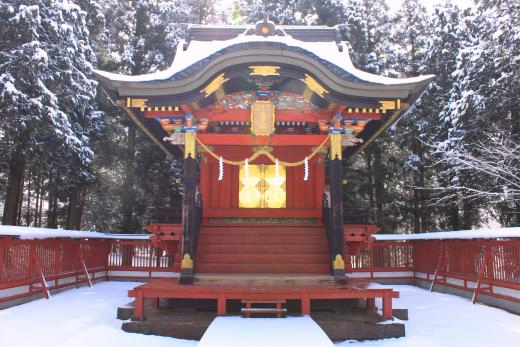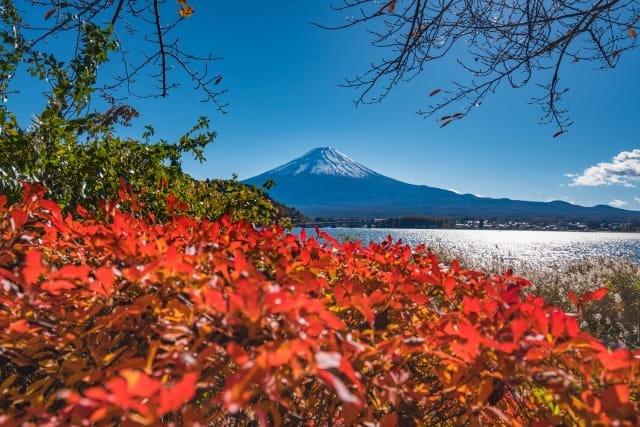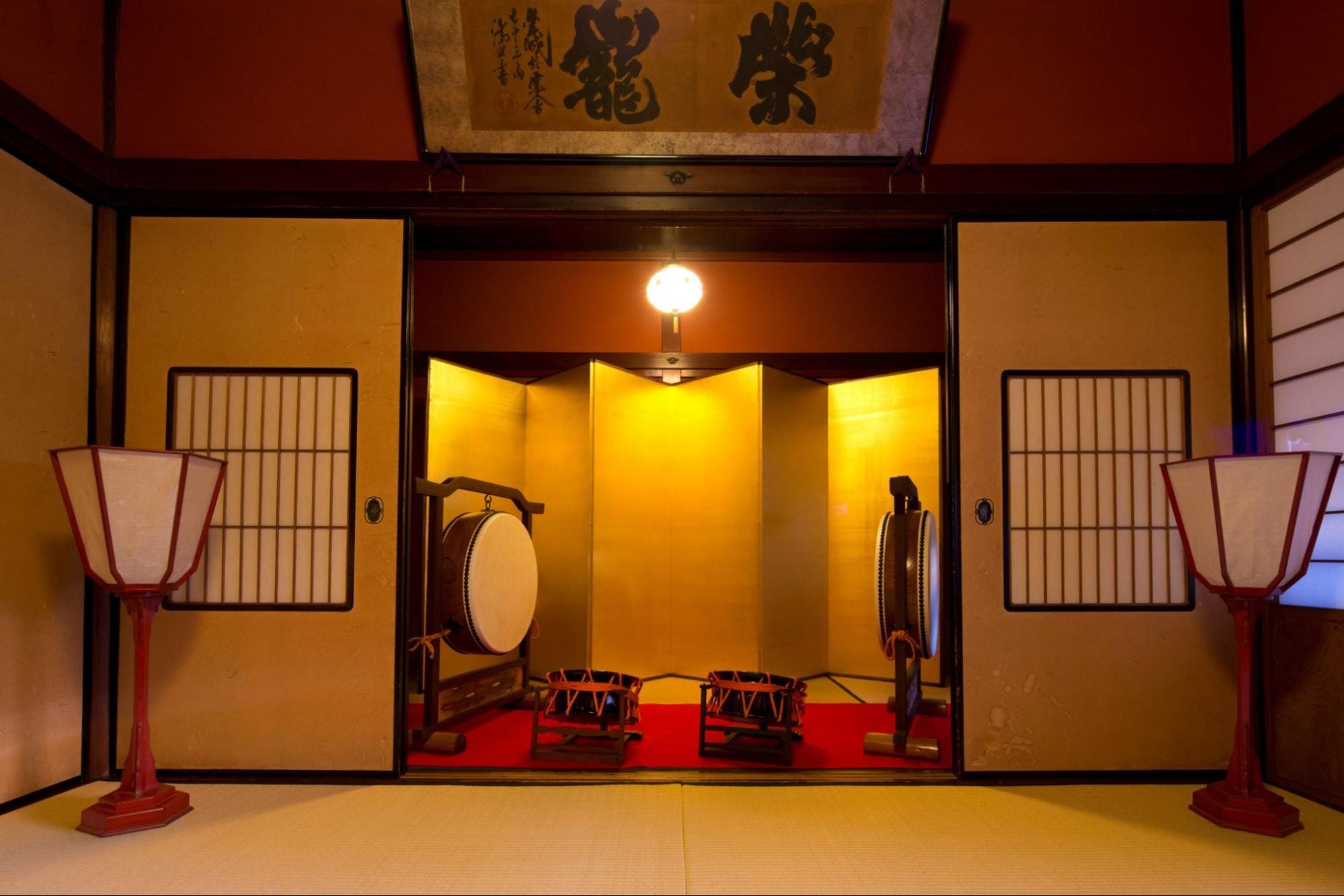Cycling around Mt. Fuji: Top Biking Routes around Lake Kawaguchiko and Tips for Ride
Mount Fuji, a symbol of Japan, attracts countless tourists who visit Japan specifically to witness its majestic presence. However, given Mount Fuji's massive size and the numerous tourist attractions scattered around its vicinity, we've created this guide to help you explore the Mount Fuji area efficiently.
Additionally, Magical Trip, which won the #1 spot for all tours on Tripadvisor in 2024, has recently launched the Mount Fuji tours.

The "Mt. Fuji Full-day Nature Guided Tour with a Private Chartered Car & Guide" offers a stress-free experience exploring the Mount Fuji area, complete with private car transportation from Tokyo.
Even if you have limited time to explore the Mount Fuji region, this tour allows you to visit all the must-see spots with detailed guidance from your tour guide.
If you're interested in efficiently experiencing the essential locations while gaining deep insights from a knowledgeable local guide who knows the area inside and out, we highly recommend joining the "Mt. Fuji Full-day Nature Guided Tour with a Private Chartered Car & Guide."
We hope you'll have a wonderful time experiencing everything Mt.Fuji has to offer by joining a Magical Trip tour!
Introduction
Mount Fuji, recognized as Japan's symbol, is one of the world's most famous mountains. The area surrounding Mt. Fuji is bustling with visitors daily, offering numerous observation points with spectacular views and shrines that reflect the region's rich history.
Particularly popular are the majestic views of Mt. Fuji from the shores of large lakes, and new tourist facilities continue to be developed in the surrounding areas.
In this article, we'll introduce information about cycling opportunities that allow you to efficiently enjoy the tourist spots and spectacular views around Mt. Fuji.
We'll also introduce model courses, so please check them out if you're interested in experiencing the natural beauty and tourist attractions around Mt. Fuji.
Cycling is recommended for efficiently exploring tourist spots around Mt. Fuji while enjoying the scenery!
The area surrounding Mt. Fuji offers numerous spots with beautiful scenery and facilities where you can experience fascinating cultural elements. For efficiently touring these attractions while enjoying the natural environment around Mt. Fuji, cycling is recommended as it allows you to easily stop and explore.
When choosing your cycling course, please focus on these three points:
・Road elevation changes
・Course distance
・Points of interest to visit
By selecting courses with minimal elevation changes, even beginners can easily take on the challenge. It's also good to check interesting spots in advance when deciding your route.
Choose a cycling course that suits your abilities to comfortably travel around Mt. Fuji.
Bicycle Rental Shops Near Mt.Fuji
Around Lake Kawaguchiko
● Fuji Kanko Travel
Address: 3644-1 Funatsu, Fujikawaguchiko-machi, Minamitsuru-gun, Yamanashi Prefecture
URL: https://www.fujikanko-travel.jp
Bicycle rental fees:
Standard Bicycle: ¥500/hour, ¥2,500/day
Electric Assist Bicycle: ¥600/hour, ¥3,000/day
Deluxe Electric Assist Bicycle: ¥700/hour, ¥3,500/day
● fujisanbike Kawaguchi-ko Station Front Baggage Storage
Address: 3634-2 Funatsu, Fujikawaguchiko-machi, Minamitsuru-gun, Yamanashi Prefecture
URL: https://fujisanbike.com/
Bicycle rental fees:
Standard Bicycle: 1 day: ¥1,500 (9:00 AM - 5:00 PM) Overnight (2 days): ¥2,700 (until 5:00 PM next day, returns from 9:00 AM)
Cross Bike: 1 day: ¥2,000 (9:00 AM - 5:00 PM) Overnight (2 days): ¥3,600 (until 5:00 PM next day, returns from 9:00 AM)
All-Wheel Drive Electric Assist Bicycle: 1 day: ¥3,000 (9:00 AM - 5:00 PM) Overnight (2 days): ¥5,400 (until 5:00 PM next day, returns from 9:00 AM)
Electric Assist Bicycle with Child Seat: 1 day: ¥4,000 (9:00 AM - 5:00 PM) Overnight (2 days): ¥7,200 (until 5:00 PM next day, returns from 9:00 AM)
● Soranoshita Kawaguchi-ko Station Front Store
Address: 3631-2 Funatsu, Fujikawaguchiko-machi, Minamitsuru-gun, Yamanashi Prefecture
URL: https://www.soranoshita.net/kawaguchiko-jp/blog/bicycle-rental-at-soranoshita-kawaguchiko/
Bicycle rental fees:
REGULAR TYPE
1 hour¥500 (from 3 p.m.)
3 hours¥1,000
1 day¥1,500
24 hours¥2,500
1 night & 2 days¥3,000
Over 1h+ ¥500
ELECTRIC TYPE
3 hours¥3,000
1 day¥4,000
24 hours¥5,500
1 night & 2 days¥6,500
Over 1h+ ¥2,000
● Sazanami
Address: 4010 Funatsu, Fujikawaguchiko-machi, Minamitsuru-gun, Yamanashi Prefecture
URL: https://bassguide.jp/sazanami/
Bicycle rental fees:
REGULAR BIKE:
1 hour: ¥400
1 day: ¥1,500
ELECTRIC BIKE:
1 hour: ¥600
1 day: ¥2,600
※As of 2025 Research
Around Lake Yamanakako
●SANSUI Bicycle Rental
1460 Yamanaka, Yamanakako, Minamitsuru District, Yamanashi 401-0501
URL:https://sansui3416.sakura.ne.jp/
Enjoy spectacular views of Mt. Fuji and rich nature! 3 recommended tourist areas for cycling
Here are three recommended areas for enjoying spectacular views of Mt. Fuji and its rich natural environment:
Lake Kawaguchiko area
Lake Yamanakako ~ Panorama Dai area
Fuji-Q Highland area (Sengen Shrine tour)
We'll introduce the characteristics of each course and highlights along the way, so please use this as a reference when planning your cycling adventure.
Lake Kawaguchiko Area
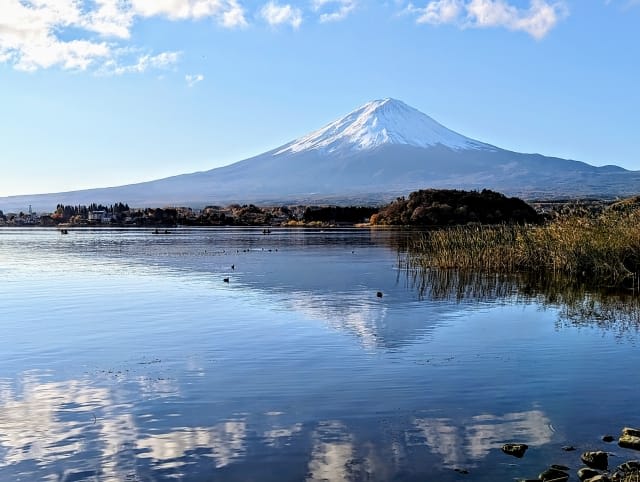
For enjoying spectacular views of Mt. Fuji and rich natural surroundings, the cycling course around Lake Kawaguchiko is highly recommended. From the various parks and rest areas scattered along the route, you can enjoy seasonal scenery alongside beautiful views of Mt. Fuji while cycling.
The Lake Kawaguchiko area features mostly flat roads, making it an ideal cycling course for beginners. The roads are marked with blue lines indicating the route, making it easy to navigate even without a guide.
The complete circuit around Lake Kawaguchiko is approximately 20km, and with stops along the way, the cycling tour takes about 3-4 hours.
Around Kawaguchiko Station on the Fujikyu Line, there are many shops where you can rent bicycles. Start your journey by renting an easy-to-ride bike and heading towards Lake Kawaguchiko at a leisurely pace.
Ubuyagasaki

The first recommended stop is Ubuyagasaki, located along the north shore after crossing the Kawaguchiko Bridge (Kawaguchiko Ohhashi). Ubuyagasaki is perfect for a cycling detour as it's accessible via a flat road with minimal elevation changes.
Ubuyagasaki is popular among tourists for its beautiful views of Mt. Fuji, which can be viewed looking up from a position close to the lake's surface.
When the water is calm, you can see the "Reversed Mt. Fuji" (Sakasa Fuji) reflected in the water like a mirror, which is one of the area's most attractive features.
Ubuyagasaki is particularly famous as a cherry blossom viewing spot, making spring the best time to visit.
<Facility Information>
・Address: Asakawa, Fujikawaguchiko-machi, Minamitsuru-gun, Yamanashi Prefecture
Kawaguchi Asama Shrine
Source: Home of Fujisan Yamanashi
When cycling around Lake Kawaguchiko, make sure to visit Kawaguchi Asama Shrine (Kawaguchi Asamajinja). The shrine preserves the natural environment and history that the Mt. Fuji region has cherished for generations, offering visitors a deeper understanding of Japanese culture while enjoying their visit.
The seven large cedar trees surrounding the shrine exude strength, with some being over 1,200 years old. Two of these trees stand close together in harmony and are known as the "Marriage Cedar Trees" (Enmusubi no Sugi).
By bicycle, you can easily access the "Heavenly Torii Gate" (Tenku no Torii) located a short distance from the main shrine grounds.
The Heavenly Torii Gate (the red gate standing at the shrine entrance) is a spectacular photo spot where you can view Mt. Fuji through the gate. The narrow access road makes it more convenient to visit by bicycle than by car.
<Facility Information>
・Address: 1 Kawaguchi, Fujikawaguchiko-machi, Minamitsuru-gun, Yamanashi Prefecture
・Hours: 9:00-16:00
・Closed: -
・Phone: 0555-76-7186
・Official Website: https://asamajinja.or.jp/
Ohishi Park
Source: Home of Fujisan Yamanashi
Ohishi Park is located on the northern shore of Lake Kawaguchi. It's an ideal destination for cycling enthusiasts as you can park your bicycle nearby and take a break while enjoying the scenery. Throughout the seasons, you can experience the stunning collaboration between seasonal flowers and Mt. Fuji.
My recommendation is the view of Mt. Fuji alongside the Kokia flowers that bloom in autumn. The field of bright red Kokia creates a beautiful contrast that enhances the blue silhouette of Mt. Fuji.
Additionally, lavender blooms around late June, filling the air with its elegant fragrance. Consider timing your visit during the Herb Festival in early summer, when food stalls and various activities create a lively atmosphere.
<Facility Information>
- Address: 2585 Ohishi, Fujikawaguchiko-machi, Minamitsuru-gun, Yamanashi
- Phone: 0555-76-8230
Lake Yamanaka ~ Panorama-dai Area
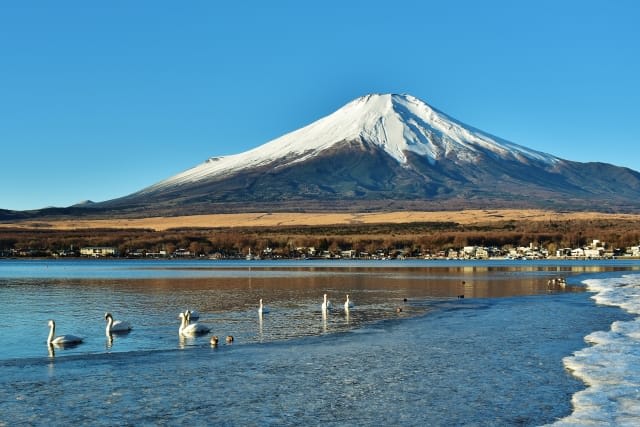
For those seeking the perfect Mt. Fuji photo opportunity, the cycling course around Lake Yamanaka is highly recommended. The area offers unobstructed views of the majestic Mt. Fuji.
The route includes a slightly uphill section at Mikuni Pass on the way to Yamanakako Myojinyama Panorama-dai. While this stretch requires some effort, the breathtaking view waiting at the top makes it worthwhile!
Beyond Mikuni Pass, the lakeside path is well-maintained for cycling, ensuring a comfortable ride.
The total distance is approximately 45km, taking about 5-6 hours when including sightseeing stops.
Start your journey by renting a bicycle from the rental shop near Mt. Fuji Station on the Fujikyu Line, then head towards Lake Yamanaka.
Yamanakako Myojinyama Panorama-dai
Source: RESORT STAY LAKE YAMANAKAKO AREA
When cycling around Lake Yamanaka, make sure to visit Yamanakako Myojinyama Panorama-dai. After conquering the steep Mikuni Pass by bicycle, the panoramic view from the observation deck is especially rewarding.
The Panorama-dai was renovated in November 2024, expanding its viewing space. On clear days, you can see as far as the Southern Alps, Japan's largest mountain range.
From December to February, early risers might catch the "Belt of Venus," a pink band of light appearing on the right side of Mt. Fuji before sunrise, making it worth an early morning visit.
<Facility Information>
- Address: Hirano, Yamanakako-mura, Minamitsuru-gun, Yamanashi
Nagaike Waterfront Park
Source: RESORT STAY LAKE YAMANAKAKO AREA
The Nagaike Waterfront Park (Nagaike Shinsui Park) is a popular tourist destination in the Lake Yamanakako area. Located on the northern shore of Lake Yamanaka, the park offers an unobstructed, breathtaking view of Mt. Fuji, making it a perfect spot for photography enthusiasts and nature lovers.
Since the park is frequently featured in guidebooks and attracts many tourists, cycling is the most convenient way to access it, eliminating parking concerns. The area is part of a scenic cycling route that circles Lake Yamanakako with Mt. Fuji as your constant companion.
The park's most spectacular view is the "Double Diamond Fuji," where both Mt. Fuji and its reflection in Lake Yamanaka are illuminated by the setting sun. This magnificent sight, with the mountain peaks gleaming like diamonds, creates an ephemeral moment that leaves a lasting impression on visitors.
To witness the Double Diamond Fuji, plan your visit around 3:30 PM in early November or 4:00 PM in early February.
<Facility Information>
- Address: Hirano, Yamanakako-mura, Minamitsuru-gun, Yamanashi Prefecture
- Phone: 0555-62-9977
Oshino Hakkai
Source: RESORT STAY LAKE YAMANAKAKO AREA
At Oshino Hakkai, visitors can observe and taste the naturally filtered snowmelt water from Mt. Fuji that emerges from springs after years of filtration. This unique opportunity to experience Mt. Fuji's natural blessing makes it a must-visit destination when in the area.
Cycling is the ideal way to explore the eight spring ponds scattered throughout Oshino Hakkai. With convenient bicycle parking available nearby, you can take your time appreciating the crystal-clear ponds at your own pace.
Among the eight spring ponds, the Sokonashi Pond (Bottom-less Pond) is particularly noteworthy. Located within the grounds of the Hannokibayashi Folk Museum, it offers a quintessential Japanese view combining a traditional Japanese house with Mt. Fuji in the background.
This scene provides an excellent photo opportunity that captures the essence of traditional Japan.
<Facility Information>
- Address: Oshinomura, Minamitsuru-gun, Yamanashi Prefecture
- Hours: Open 24/7 (Hannokibayashi Folk Museum: 9:00 AM - 5:00 PM)
If you want to efficiently explore tourist spots around Mt. Fuji by car, try joining Magical Trip's "Mt. Fuji Full-day Nature Guided Tour with a Private Chartered Car." You'll visit 5-8 carefully selected locations with a private car and an expert guide who knows the Mt. Fuji area inside and out.
With pick-up and drop-off service from Tokyo included, you can enjoy each destination stress-free and efficiently.
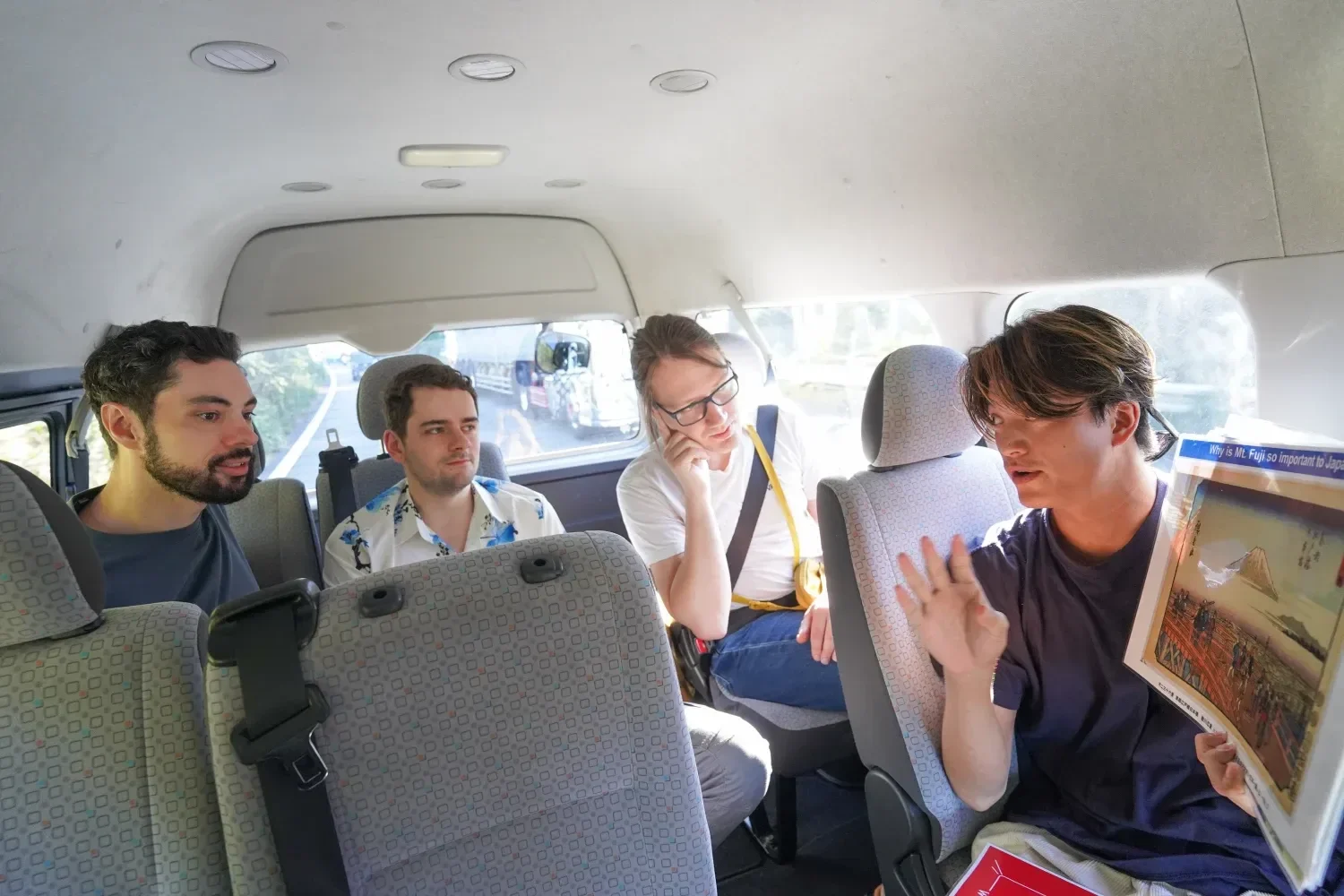
Around Fuji-Q Highland (Touring Sengen Shrines by Bike)
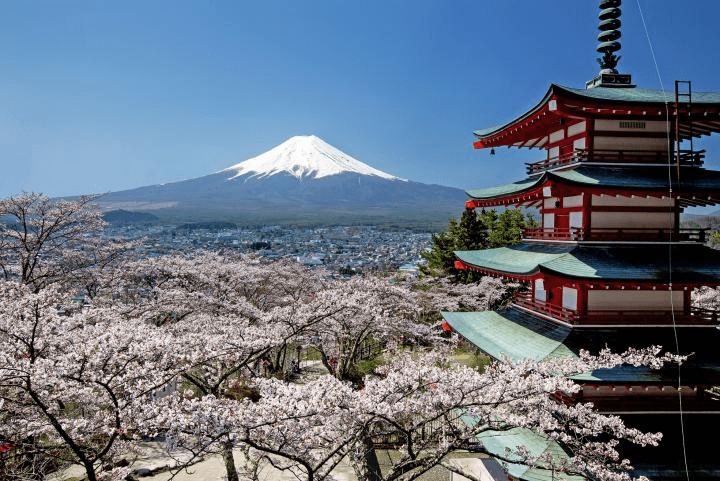
For those interested in Japanese culture or who have previously visited the Mt. Fuji area, why not explore deeper into Japan by cycling between shrines? You'll have a fulfilling day learning about Mt. Fuji's history and the surrounding regions.
The route is beginner-friendly with minimal elevation changes. You'll enjoy diverse scenery as the course takes you through forests and along lakeshores.
The total cycling distance is approximately 36km, and including time for shrine visits, the round trip takes about 3-4 hours.
The recommended starting point is Kawaguchiko Station on the Fuji Kyuko Line, where numerous bike rental shops are conveniently located near the station. After selecting a comfortable bicycle, start pedaling towards Lake Kawaguchi.
Kawaguchi Asama Shrine
Source: Home of Fujisan Yamanashi
The shrine grounds offer a cool, shaded area perfect for cooling down after cycling in the Mt. Fuji area.
Learning about Kawaguchi Asama Shrine's history reveals how local residents have coexisted with Mt. Fuji throughout the ages.
The shrine was built following a major Mt. Fuji eruption in 864 CE, which severely impacted local residents. To appease the volcanic activity, they enshrined the mountain as "Asama Daijin."
The "Chigo no Mai" (Children's Dance), originally performed by children praying for peace, continues today and is recognized as an important Japanese traditional performing art that should be preserved.
<Facility Information>
- Address: 1 Kawaguchi, Fujikawaguchiko-machi, Minamitsuru-gun, Yamanashi Prefecture
- Hours: 9:00-16:00
- Closed: None
- Phone: 0555-76-7186
- Official Website: https://asamajinja.or.jp/
Fuji Omuro Sengen Shrine
Source: Home of Fujisan Yamanashi
Located on the southern shore of Lake Kawaguchi, Fuji Omuro Sengen Shrine is a must-visit spot while cycling around the area, offering stunning lakeside views. The shrine grounds provide a sacred space where visitors can experience authentic Japanese atmosphere.
A unique highlight of Fuji Omuro Sengen Shrine is the "Yakuwari" (misfortune-breaking) ritual experience. In Japanese culture, when a series of unfortunate events occur, people often attribute it to bad luck (yaku) and perform rituals to ward it off.
The Yakuwari is a simple purification ritual where visitors purchase a "Yakuwari no tama" (fortune-breaking ball) from the shrine office and throw it at a cup-shaped bronze statue called "Yakuwari no sakazuki." It's said that if the ball breaks successfully, it will help ward off any impending misfortunes.
While exploring Mt. Fuji by bike, take the opportunity to experience this unique Japanese purification custom.
<Facility Information>
- Address: 3951 Katsuyama, Fujikawaguchiko-machi, Minamitsuru-gun, Yamanashi
- Hours: Summer (Late March-Early November) 9:00-16:30
Winter (Late November-Early March) 9:00-16:00
- Closed: None
- Phone: 0555-83-2399
- Official Website: https://fujiomurosengenjinja.jp/
Kitaguchi Hongu Fuji Sengen Shrine
The Kitaguchi Hongu Fuji Sengen Shrine offers an excellent cycling course through the lush Suwa Forest. With over 1,900 years of history, the shrine's main attraction is its Main Hall (Honden), which is designated as an important cultural property of Japan. The hall features exquisitely detailed decorations.
The shrine is known for bringing good fortune in childbirth and relationship connections. When visiting, try following these proper worship procedures:
1. Stop in front of the main hall
2. Put a coin in the offering box
3. Ring the bell
4. Bow twice
5. Clap twice and pray with hands together
6. Bow once
Following other worshippers' example will give you a genuine taste of Japanese cultural traditions.
<Facility Information>
- Address: 5558 Kamiyoshida, Fujiyoshida City, Yamanashi
- Hours: 8:30-17:00
- Closed: None
- Phone: 0555-22-0221
- Official Website: https://www.sengenjinja.jp/

